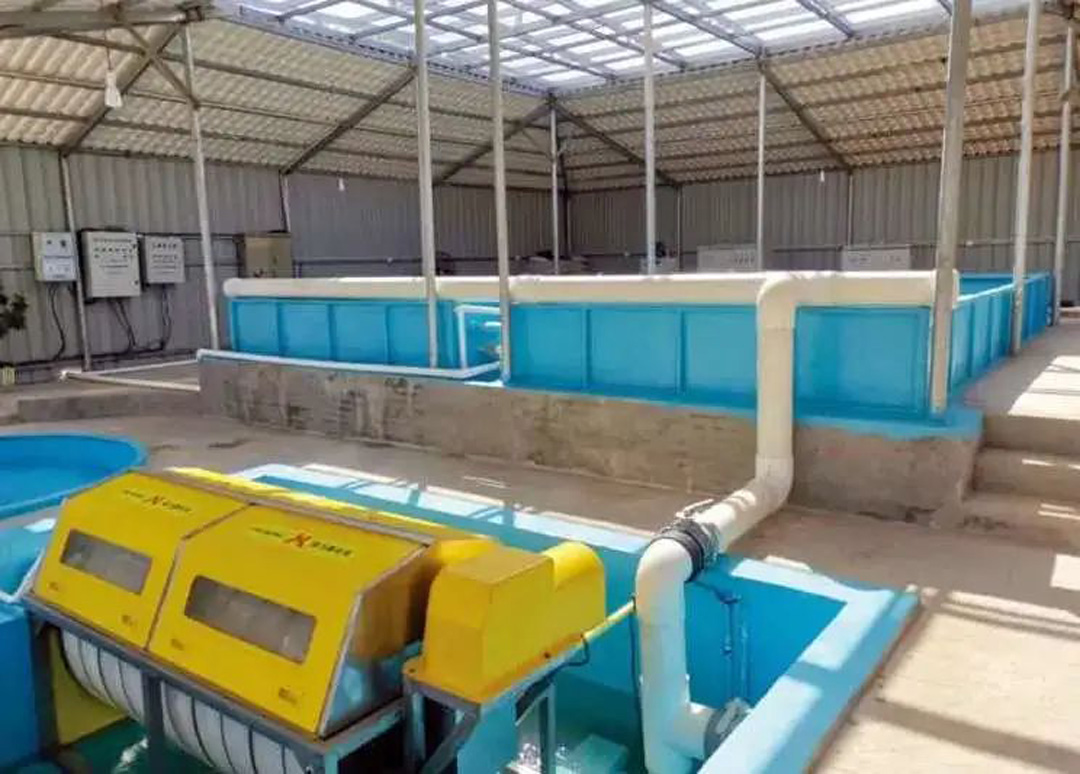Technological frontier
Tail water treatment for aquaculture

In recent years, with the development of my country's marine aquaculture industry and the increase in people's demand for seafood, in order to achieve sufficient production and supply, the marine aquaculture industry has tended to be intensive, high-density, and high-output aquaculture models, which has led to marine aquaculture environmental pollution. problems are becoming increasingly prominent. On the one hand, the pollution of aquaculture waters will limit the output of seafood, hinder the development of the industry and cause economic losses. The imbalance of the entire aquaculture ecosystem has caused irreversible damage to the marine ecological environment. In fact, the total discharge of marine aquaculture wastewater has now exceeded the total discharge of land-based sewage.

The Ministry of Agriculture of our country pointed out in the "2012 Bulletin of the Ecological Environment of China's Fisheries" that the serious pollution of marine aquaculture areas in my country's coastal areas is mainly due to the high content of phosphorus, so solving the problem of water pollution in the process of marine aquaculture is very important to the health of my country's agriculture. Sustainable development is of great significance. To achieve the sustainable development of aquaculture, it is not only necessary to carry out simple treatment of sewage (such as direct discharge, etc.), but also to ensure good environmental and economic benefits, and at the same time to achieve "green production", turning waste into treasure, This puts forward higher requirements for the treatment method of aquaculture wastewater.
Conventionally, the treatment technology of marine aquaculture wastewater is the same as that of most wastewater, mainly including physical, chemical and biological methods. However, unlike domestic sewage and industrial wastewater, aquaculture wastewater has low pollutant content and large water flow. In addition, the salt contained in seawater will also increase the difficulty of aquaculture wastewater treatment. Sewage treatment includes the following methods:
1) Physical treatment technology: The physical method uses sedimentation (sedimentation tank sedimentation), filtration (sand filter tank) and bubble film separation technology to remove pollutants. The physical method has low cost, but it is difficult to remove some soluble organic matter, inorganic matter and nitrogen and phosphorus nutrients.
2) Chemical treatment technology: At present, some chemical methods that are harmful to the environment and cause secondary pollution have been banned, while ozone method, chlorine dioxide electrochemical method, and ultraviolet irradiation method are used more frequently, among which ozone treatment technology is the best. . It can not only achieve the effect of sterilization and disinfection, but also increase the dissolved oxygen in the water body during the treatment process.
3) Biological treatment technology: The biological method uses the growth and metabolism of microorganisms to replace expensive non-renewable materials and energy, and most of them can achieve energy recycling, which is an "environmentally friendly" sustainable green pollution control technology. At present, biological reaction tanks are commonly used in aquaculture production, that is, mainly relying on nitrifying bacteria and nitrosifying bacteria to remove ammonia nitrogen and nitrite nitrogen in water, but the total nitrogen in water is not digested after conversion.

In terms of wastewater treatment, microalgae can not only efficiently utilize organic matter and inorganic matter in wastewater to synthesize their own nutrients, but also adsorb and enrich heavy metal ions such as Co, Mn, Hg, etc. Material. Using photoautotrophs to assimilate nutrients in wastewater is more efficient and safer than physical and chemical methods. In addition, microalgae treatment of wastewater has the following advantages:
1. Microalgae cultured in wastewater can produce high-value biomass, with good biochemical composition, and can be used as high-quality animal feed. Microalgae biomass is a source of high-value products, such as fatty acids, pigments, polysaccharides, etc.
2. Integrated Multitrophic Aquaculture Process (IMTA): Treatment of aquaculture wastewater with macroalgae and microalgae, and subsequent use of the obtained biomass to feed other aquatic organisms. Since microalgae can simultaneously function as a biofilter, oxygenator and feed, the use of microalgae populations is the best option for IMTA systems.
Microalgae can be cultured in fish ponds and their wastewater to provide in situ bioremediation. Microalgae biofiltration of wastewater from extensive and intensive aquaculture can be carried out in separate cultivation units, but in this case the use of microalgae may become an uncontrollable factor in the wastewater and cultivation conditions must be carefully designed to improve Yield and processing efficiency.
1. In extensive and semi-intensive aquaculture systems, wastewater can be treated in waste stabilization ponds, where high water depths (1-3 meters) result in low algal productivity and long production times.
2. In stable ponds, aquaculture wastewater is used as a medium to cultivate natural algae. The coexistence of several species will produce a large number of bacteria, forming a symbiotic system. The oxygen produced by algal photosynthesis is used by bacteria for aerobic treatment of water, while Photosynthetic activity was not enhanced by ventilation or nutritional supplementation. During this process, organic carbon compounds are partially oxidized by bacteria to carbon dioxide, which are then assimilated by algae during photosynthesis. Algae convert soluble nitrogen and phosphorus compounds into biomass.
3. High-speed algal ponds (HRAPs) are sewage stabilization ponds in an integrated land-based aquaculture system. HRAPs are designed to match the production of algae and O2 with the influent BOD, so it is sometimes necessary to continuously add limiting nutrients such as silicon (diatoms) and phosphorus to ensure a ratio of 10N:5Si:1P to maintain the microalgae in the sewage. continuous culture. HRAP can remove up to 175 g BOD/m3 per day compared to 5-10 g BOD/m3 per day removed by normal stabilization pools. The increase in algal photosynthesis increases the rate of hydrolysis for the pond.
4. In order to improve the efficiency of microalgae cultivation, intensive microalgae cultivation can be combined with technologies for treating sewage, such as epiphytes, microalgae-bacteria complexes and cell immobilization. This alternative technology increases system efficiency by effectively reducing dissolved nutrients and feeding farmed animals for algal biomass.
5. Immobilized cultured microalgae: Compared with suspended microalgae, the research of immobilized microalgae is more extensive, mainly including embedding method and adsorption method. Immobilized algae have the advantages of high algal cell density, easy to obtain in large quantities, fast reaction speed, high removal efficiency, easy separation and regeneration of effluent, etc., and have good research and application prospects.
R&D Center: Sun Na

Photosynthetic crab rice home
WeChat|ghxiedaojia
This is a public account with a soul